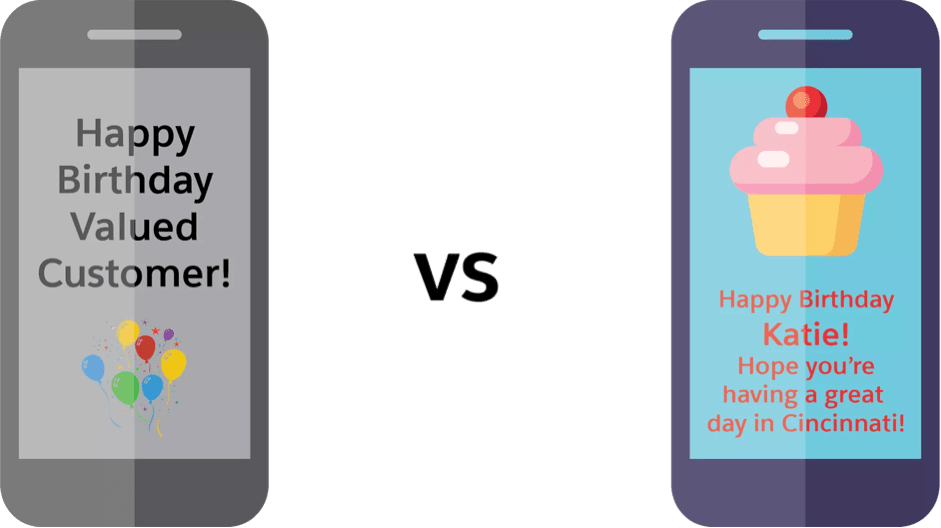Select your language
Blog
Dive into the world of Marketing Automation:
Practical & helpful knowledge that makes your daily life with Marketing Automation easier!
How to improve the opening rate and click rate of your emails
Create Emails that take action
So you want to write an awesome email. One that spurs people to action and doesn't get ignored. Well, you're about to learn creating effective subject lines, keeping emails relevant, and inspiring readers to action.
Let's start with how to write an email that genuinely catches a reader's attention.
Subject lines best practices
What's the first thing a subscriber reads? The subject line. If it doesn't grab their attention, the work you put into the email is lost. How can you ensure your subject lines are effective?
Keep them short. Short and medium-length subject lines have higher open rates than long ones, which ultimately affects conversion rates (the percentage of people who take action based on your email). So limit them to 50 characters or fewer.
Use your branding to your advantage. Limiting the length of your subject line doesn't mean you have to sacrifice style. Infuse your brand into the messaging and take advantage of brand loyalty. Catch the reader's eye with symbols, creative wordplay, or emoticons.
Test, test, and test again! This is how you determine which subject lines yield the best results. With good email marketing services, it should be possible to do A/B Tests! We have a blog article to do it with Salesforce Account Engagement (Pardot).
A/B Testing Subject lines
A/B testing shows you how subscribers respond to subject lines of varying length, style, or personalisation. It also shows which are most effective according to a variety of metrics, such as opens, clicks, and conversions. These metrics help you understand what motivates your subscribers.
Example: Try to put your brand first, to test what this does with the open rate
Subject A: Company name: your subject title
Subject B: your subject title
Example: Try to A/B test with personalisation and without.
Subject A: 20% off on your order - Shop now!
Subject B: %%First Name%%, 20% off on your order - Shop now!
And please, "%%Month%% Newsletter" as subject line. This will not make your subscribers enthusiast. You can do better!
The power of personalisation with dynamic content
Readers who see their first name in an email are more likely to feel as if the email is reaching out to them personally. This makes them more likely to open, read, and act on your email.
You can track a lot of things about your customers, such as name, location, gender, interests, and so on. Your email marketing system can translate this information into highly effective, personalised emails for your customers. You use a placeholder, or personalisation string, which automatically inserts subscriber values, such as name, interests, or location.
This is a powerful way to use your data, but be careful. If you insert a field placeholder that isn't populated for a particular subscriber, you can get some wacky results. Are you impressed with emails addressed to "Dear [blank]"? Probably not. To avoid this, define a default value (such as "Customer" for "First Name") for anything you're personalising.
Example:
We know how much you love %%Interest%%
translates to:
We know how much you love Marketing Automation.
Dynamic content ensures subscribers receive messages targeted to their interests.
When a customer, John, is interested in football. With dynamic content, you can send him emails that speak directly to his interests. You don't want to send John an email announcing a sale on women's football shoes. When John only gets emails that are relevant to him, he's much more likely to read them.
A Call to Action
Take note with these 5 CTA tips:
- Urgent: Use CTAs that create a need for urgent action.
- Brief: State the CTA briefly, with no more than five words.
- Action: Begin your CTA with a verb (download, register, buy, save).
- Clear and predictable: Be clear and link to a place that doesn't surprise subscribers.
- Limited and visible: Focus subscribers' attention on one to two prominent CTAs.
Once you follow these steps you will see your emails get picked up more and more.
Are you still struggling with your emails? And are you not confident enough to create emails that take actions? We offer a free consult session by one of our email experts. Together we will scan your emails and look for improvements.
Leave your contact info behind and we will contact you!







